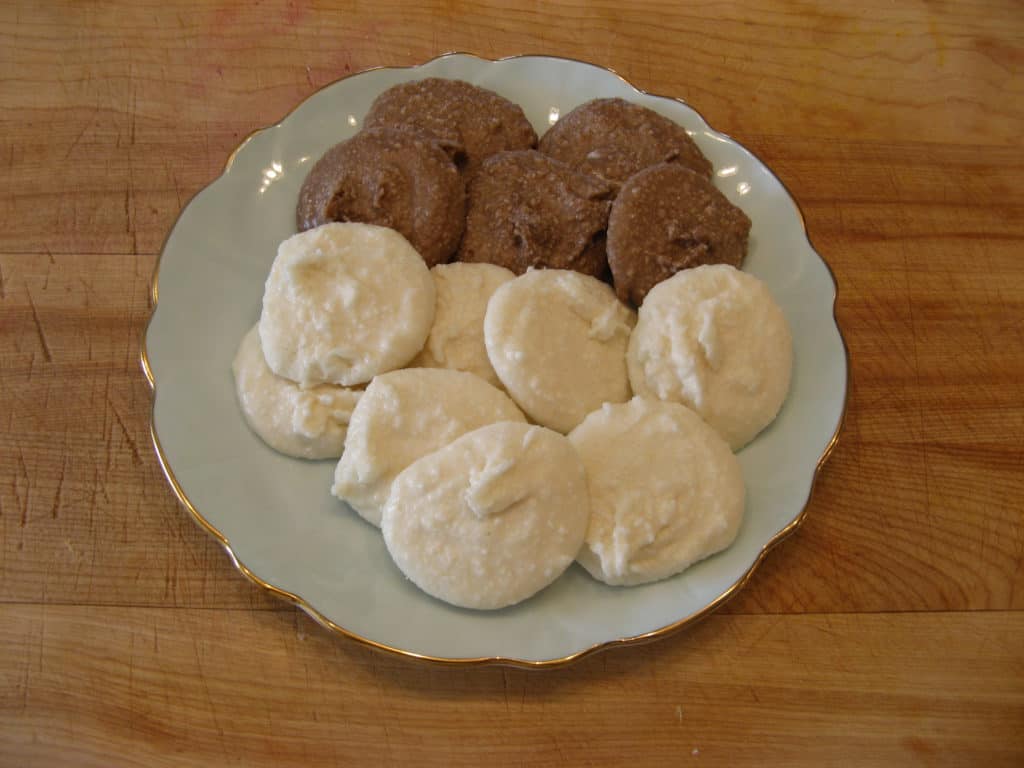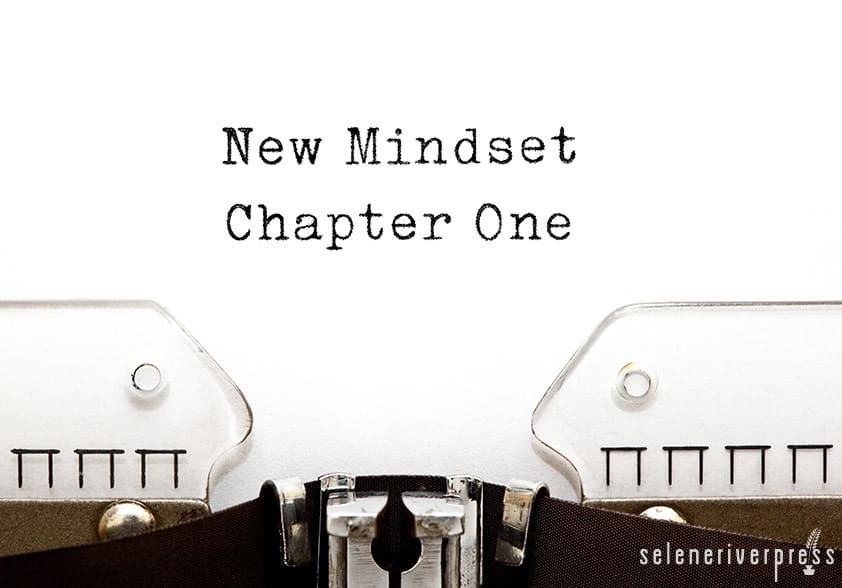I’m one of those people who thinks it’s wise to take stock, with brutal honesty, of myself and my life at year’s end. Yes, I retreat to a quiet place where I can concentrate and take a serious look into my life. I reflect on my spending habits, on the time I wasted, on the resentments I held, and, most importantly, on my health status. If you’ve never tried this life-saving exercise, I highly recommend it. It’s a terrific way to see how you scored in the school of life over the previous year, and it can prepare you to start anew in the year to come. All of us are mortal, so you should strive to make every year count!
It would be unfair to tell you what this end-of-year review can do for you without first explaining what it’s done for me. Allow me to describe three of the best outcomes I’ve achieved from thinking through the events and near-miraculous results of previous years. Your life experiences may be different from mine, but in this article I can only speak of myself, and I hope it helps you too. So here goes.
Spending Habits and Getting Out of Debt
In my humble opinion, getting out of debt is the first step toward increasing your overall health issues, whether they are mental, physical, or spiritual. Debt is a dastardly thing that can affect the whole body with major negative energy! Other than end-of-life sickness, there’s possibly no greater deterrent to our health than financial stress. No matter if you’ve been a spendthrift or if you’ve just experienced some bad luck—either way, it’s just plain chilling!
At one time in my life, after making some very bad financial decisions, I lost my home. I was over forty-thousand dollars in debt and had nowhere to go! Since I have no close family, it was even more devastating. I had to face this disaster pretty much alone. And my bad luck didn’t stop there. To top this dreadful experience off, my car quit on me midstream. I was absolutely in holler mode, and I seriously didn’t know how I’d ever recover!
However, I’m a true believer in the power of prayer. Providentially, I eventually found a small mobile home community that was very clean and occupied by residents fifty-five and older. Here I was able to settle down. I had my own space and time to contemplate my way forward. And lucky for me, I was placed next door to a very nice lady whose husband’s bout with cancer had left her bankrupt, and she too eventfully lost her home.
I invited her over for a visit one early morning. As we talked, I asked her how she got out of her immense debt. With a knowing smile, she told me that I could get out of debt in record time—and also have money to spare. If I seriously and consistently followed her advice, she said, I could meet all of my needs for the rest of my life. Quite a promise! What was her advice? I was to start asking myself this question whenever I went shopping or contemplated buying anything at all: Is this something I need or something I want?
I was desperate at the time, and I thought this would be somewhat easy to try. Even though part of me had little faith it would work, I nevertheless decided to take her advice to heart. This exercise isn’t for the timid of heart, as the next three years proved to be utter hell. It was a struggle to buy only those things I needed while walking away from most of the things I wanted.
I had some occasional slipups, but slowly my commitment grew stronger. It became easier for me to make do with what I had. Day by day, my attitude and materialistic tendencies began to change. For the first time in my life, I began to feel a sense of peace and contentment. It’s strange but true, but I realized that being poor wasn’t so bad. (Smile)
The results were near miraculous! Within a little more than three years, I paid off my debt. A very nice used car came into my life, and it too is paid off. These days, I’m writing for some much-needed extra cash. However, the most important thing by far is that I’ve developed (at least to some degree) those sister virtues called prudence and patience. And God willing, by this time next year I will have published my first recipe book!
I’d be remiss not to share a rather strange phenomena that I’ve noticed. When we begin to practice any virtue, it seems that nature brings unexpected friendships and positive happenings into our lives. In my case, I developed a professional relationship with a very smart lady. Ironically, it not only grew into a close friendship but also led me to many wonderful financial rewards!
As you practice these key virtues, expect that you too will encounter providential happenings. To this day I cannot understand my good fortune, but I’ve come to believe that my practice of the virtues of prudence and patience opened the door to many mysterious and wonderful blessings. It will do so for you too, I promise.
Wasting Time: The First Step That Leads to Failure
“The whole idea of piddling is to kill time, but without any great effort at all, or even really meaning to. If one piddles correctly, time just goes away, without regret on the part of the piddler, or even any particular notice. One does not march off to piddle. One meanders. And even when one heads off to do it, one may not go to piddling right away, because one might have to loafer a little first. But loafering is another story.”
—“The Fine Art of Piddling” by Rick Bragg, published in SouthernLiving.com
There’s probably not one of us who doesn’t indulge in some piddling. And as the quote above hints at, a certain amount of piddling can be a good thing. However, these days it seems that professional piddlers are glued to Facebook and other worthless social media platforms. Too many seniors and loners spend a good deal of time piddling. After one of my own intense piddling sessions, I realized that I hadn’t cooked my dinner, written any get well cards to my sick friends, or been productive in any way by day’s end. At last I was able to see the futility of constantly checking for new emails or watching YouTube videos for the latest gossip. Dear reader, this can be a serious problem. When I cut down on my piddling, I was astonished at how many productive, life-giving tasks I was able to accomplish. Indeed, piddling away too much time is the first step to squashing your dreams.
Forgiveness: An Important Dietary Guideline from the Weston A. Price Foundation
While slowly absorbing and incorporating the twenty dietary guidelines recommended by Sally Fallon and the Weston A. Price Foundation into my life, I was always somewhat surprised by the final guideline: “practice forgiveness.” Isn’t forgiveness related to some form of spiritual or emotional work?
Not that the other nineteen guidelines hold any less importance when it comes to optimum health, but I really had to take a second look at number twenty. How does practicing forgiveness help me with my latest and greatest batch of bone broth or kefir? Due to my overactive sense of curiosity, I began my quest to learn more. As it turns out, you’d need to write an entire book to list all of the benefits of practicing forgiveness. Sally Fallon explains how these guidelines can help us lead a vibrant lifestyle in easy, commonsense steps. You can read more on forgiveness as well as the other nineteen dietary guidelines in my blog post “Practice Forgiveness.”
In closing, I’d like to point out that there’s no such thing as perfection. However, it astonishes me that a simple set of rules and guidelines, when added to a yearly think-through of how we’re managing our lives, can bring us greater security, better health, and improved peace of mind. Let me now share with you a few of my favorite recipes that I’ve enjoyed in 2017.
My Favorite Recipes This Year
Bone Marrow Butter
—In a previous post on fish broth, I wrote: “Bone marrow is a soft, spongy tissue found inside femur bones. Red blood cells, white blood cells, and platelets are produced in the bone marrow. With its unique fat and cholesterol composition, this substance is highly prized for its life-giving and brain-building properties. Bone marrow is considered a delicacy and is generally roasted or taken from bones that have been used in bone broth. Spread on toasted French bread rounds, it can become your daily nirvana.”
This is an original recipe from Monica Corrado.
Ingredients
6–8 marrow bones, cut short (no more than 2-inches in length)
½ cup raw butter, cut into 1-inch cubes and softened
¼ teaspoon sea salt
¼ teaspoon dried rosemary
¼ teaspoon fresh parsley, chopped fine
Instructions
- Preheat oven to 425°F. Spread bones out on cookie sheet lined with parchment paper, marrow side up.
- Roast bones 15–20 minutes, until marrow is bubbly and knife-tender all the way through. Let bones cool to touch, then scoop out marrow.
- Add marrow, raw butter, salt, rosemary, and parsley to a food processor. Blend until incorporated and serve.
Sugar-Free No-Bake Coconut Cookies
—Adapted with permission from Nicole Eckman, RD.
These cookies are a great way to get more coconut oil into your diet and prevent a hypoglycemic event from coming on. Children love them, and they offer great antimicrobial properties to kids who have colds. They contain no sugar and therefore make for a safe snack. If you get slightly nauseous when you eat them, it may be an indication that you have a gallbladder or bile issue that prevents you from digesting fat properly.
Special medicinal effect: Eat as a snack as soon as you are aware of a hypoglycemic event coming on, or in time to prevent one.
Ingredients
1½–2 cups unsweetened coconut flakes
2 tablespoon raw carob powder (optional)
½ cup coconut oil, slightly melted
¼ teaspoon vanilla extract
1 tablespoon organic almond or peanut butter (optional)
Instructions
- Pulse all ingredients in blender or food processor until creamy, stopping to scrape down the sides and bottom. If mixture is too dry, add 1–2 tablespoons coconut oil at a time to insure it doesn’t get too runny. (Dryness might also be caused by larger coconut flakes, so adjust amount if needed.)
- Line a cookie sheet with parchment paper (or use a stoneware cookie sheet) so cookies are easy to remove. Scoop a tablespoon (or a bit more) of dough into the palm of your hand. Squeeze into the shape of a small ball. The dough should be sticky enough to stay together.
- Place the coconut ball onto cookie sheet. Flatten gently into round “cookies.” Store in fridge or freezer until solid. These no-bake cookies may usually be left on the counter after they’ve been frozen, depending on the heat of your kitchen.
Piggy and Chicken Feet Basic Bone Broth
—A Traditional Cook original recipe developed for my blog post “Muscle Memory.” (Contact Maria Atwood to use or adapt this recipe with permission.)
I can almost hear you saying eew. (Smile) But don’t let the ingredients called for in this robust high-gelatin broth scare you off. I get my piggy and chicken feet locally from Ranch Foods Direct. However, you can find other suppliers in the Weston A. Price Foundation Shopping Guide or phone app. This particular combination is one of the most dense, gelatinous broths you can make—even thicker than Jello!
Ingredients
1 pig foot (mine was approximately 10-inches long)
1 package (about 1 lb.) chicken feet, cleaned and skin left on
1 cup vinegar
1 large yellow onion, chopped
Raw leftover veggies (except beets), if you have them
Instructions
- Place pig’s foot and chicken feet in a small oval pan.
- Add vinegar and fill pan with spring water.
- Carefully place pan in refrigerator. Allow feet too soak through the night.
- Next morning, rinse well and place in a large oval slow cooker.
- Add onion and other raw leftover veggies (if using).
- Add spring water to fill to top. Cover and place on high heat for about 1 hour.
- Turn to low and simmer for approximately 12 hours. (I generally start mine at 5 to 6 in the morning, and it’s nicely cooked by 6 that evening.)
- Allow broth to cool. Remove pig’s foot with a slotted spoon and save to eat. (It’s quite tasty with a bit of salt and pepper.)
- Remove chicken feet with slotted spoon. (These can be cooked a second time until extremely soft, then crushed for use in your homemade dog or cat food.)
- Strain broth into a large glass bowl and place in refrigerator overnight.
- Next morning you’ll have a thick and healthy broth. (I freeze mine in 1-pint BPA-free plastic containers. Instead of water, I’ll use this broth in my beans or add to other soups. You can also heat a cup, add finely minced garlic, salt, and pepper, and serve it with a meal.)
Beet-Cranberry Kvass
—A Traditional Cook recipe. (Adapted from Nourishing Traditions, p. 610. Used with permission.) This is my special blend for what I consider a more potent type of beet kvass—including my secret to making it super fizzy.
According to Nourishing Traditions, p. 610: “Beets are just loaded with nutrients. One 4-ounce glass, morning and night, is an excellent blood tonic, promotes regularity, aids digestion, alkalizes the blood, cleanses the liver and is a good treatment for kidney stones and other ailments.”
As for cranberries: “After reviewing nearly 40 different studies on cranberries and cancer, the author found that there are three main phytochemicals that seem to be responsible for cranberry’s anti-cancer power:
- “Proanthocyanidins (powerful antioxidants)
- “Anthocyanins (anti-cancer, anti-inflammatory)
- “Ursolic acid (anti-inflammatory, anti-proliferative)”
—“Serve Your Turkey with a Side of Cancer Protection,” PeakHealthAdvocate.com
This recipe yields enough for one ½ gallon glass Mason jar.
Ingredients
3 medium-sized or 4 small organic beets, washed and gently cleaned, with skins left on
1 tablespoon sea salt or Celtic salt
¼ cup whey (my favorite is whey drained from homemade kefir)
¾ cup pureed frozen cranberries
Special equipment: glass Mason jars with white plastic lids
Instructions
- Cut beets into small (about ½-inch) dice. Fill half-gallon glass Mason jar approximately 2½-inches deep with diced beets
- Add salt, whey, and cranberries (see comment below).
- Fill Mason jars with spring water, leaving small space at the top.
- Cap jars with white plastic lids. Turn side to side to insure salt is dissolved
Comments
Pureed cranberries: For larger quantities, I generally buy a bag or more of frozen organic cranberries. Once combined with spring water, for each ¾ cup they’ll yield approximately enough for five. Before starting this dish, I place the frozen cranberries in my Vitamix, but you could of course use a food processor or blender. I then add spring water to barely cover the cranberries and let it sit for about 10 minutes. Next, I blend the water and cranberries into a puree and remove ¾ cup for use in the recipe.
Storage: Place your prepared beet-cranberry kvass on a table or counter top (temperature should be approximately 70°F, give or take). I place a heavy towel over all my jars because this seems to help them ferment quicker (optional). Leave on counter for approximately 3–5 days, or until you see a thin, white, foamy film form at the top.
At this point, place Mason jar(s) in the fridge for at least 3–4 weeks. They’ll ferment slowly, and the wondrous fizz we all love will develop naturally. Because it takes at least 3–4 weeks to turn fizzy, I recommend making 5–10 bottles each time. When you start drinking it, immediately make another jar. Start rotating so you’ll always have something starting to ferment.
Whey: The reason I use whey and not just salt, as many people do, is because Sally Fallon includes both whey and salt in her ferments. According to Sally, using whey accelerates the fermenting process. If you use salt alone, especially if you use it in the wrong proportions, the ferment may grow mold. Salt alone acts slower when it comes to beginning the fermenting process. If you prefer to use just salt, experiment with the amount so you know how much you’ll need to start the ferment and not grow mold. Or simply follow one of the many beet kvass recipes that use only salt.
For more information on beets, be sure to read my blog post “The Beauty of the Beet.”
[xyz-ihs snippet=”Begin-Authors-Note”]Afterthoughts from the Traditional Cook
Thinking quietly about my “Afterthoughts,” it occurred to me that we could find thousands of books on the value of practicing the virtues. However, I discovered a meaningful message that expresses this in a few powerful words. I leave you with the following two paragraphs from Virtues for Life:
Why Practice Virtues?
“Virtues are universal and recognized by all cultures as basic qualities necessary for our well-being and happiness. Necessary because when we practice virtues and build the ‘character muscle,’ we will attract what may have been missing in our life, such as fulfilling relationships, achievement of meaningful goals, and happiness. The moment we declare, ‘I am persevering to achieve this goal in spite of all obstacles, self-doubt and fear,’ a shift occurs where we naturally become more focused, determined, and courageous, leading us to success.
“Often we know that it takes perseverance to reach our goals, and we still never get there. We know if we forgive someone then we may not be as angry and uptight, and we know it takes courage to accomplish great things. So why then, if we know what to do, do we still stay stuck? Because we have not yet consciously and boldly applied a virtue to a given situation so as to alter its outcome, from what has always been to what can be…”
Composed by Maria Atwood, CNHP
[xyz-ihs snippet=”End-Authors-Note”]
Note from Maria: I am a Certified Natural Health Professional, CNHP, not a medical doctor. I do not diagnose, prescribe for, treat, or claim to prevent, mitigate, or cure any human diseases. Please see your medical doctor prior to following any recommendations I make in my blogs or on my website.
Images from iStock/IvelinRadkov (main image), nicoletaionescu (woman checking price tag), CJMGrafx (man in office chair).




